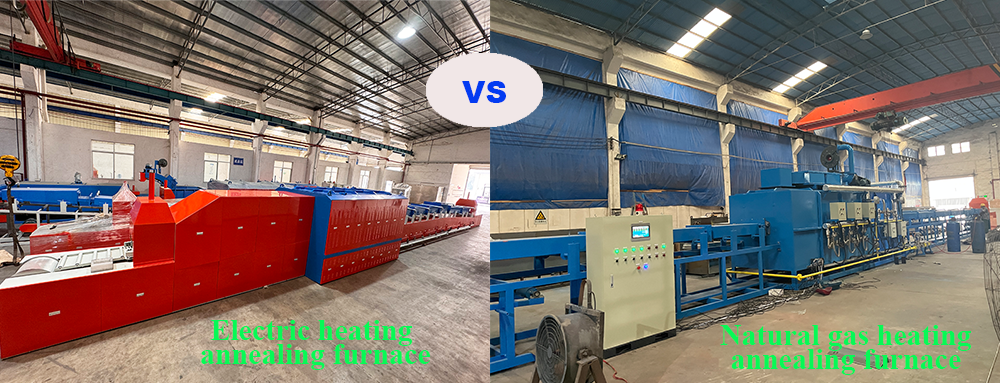Comparison of Natural Gas Heating and Electric Heating in Continuous Furnaces
May. 27, 2025
Both natural gas heating and electric heating have their respective advantages and disadvantages in continuous furnace applications, requiring a comprehensive evaluation based on process requirements, cost considerations, and environmental compliance. Below is a detailed comparative analysis:
1. Heating Efficiency and Temperature Control
Natural Gas Heating
Heating Efficiency: Natural gas has a high calorific value, enabling rapid heating suitable for high-temperature scenarios (e.g., above 1000°C).
Temperature Control: Temperature regulation is achieved by adjusting gas flow and air-to-fuel ratio, though combustion inertia may result in slightly greater temperature fluctuations compared to electric heating.
Applications: Large-scale continuous furnaces, high-temperature heat treatment (e.g., forging, annealing).
Electric Heating
Heating Efficiency: Electric heating elements (e.g., resistance wires, silicon carbide rods) offer high thermal conversion efficiency, with temperature control precision up to ±1°C.
Temperature Control: Precise temperature regulation is achieved via PID controllers, making it suitable for processes requiring high temperature uniformity (e.g., precision annealing, sintering).
Applications: Small-scale continuous furnaces, medium-to-low temperature heat treatment (e.g., below 600°C), laboratory equipment.
2. Operating Costs
Natural Gas Heating
Fuel Costs: Natural gas prices are relatively stable, but costs for pipeline installation, burner maintenance, and other expenses must be considered.
Energy Consumption: Combustion efficiency is high, though heat loss at elevated temperatures is significant (requiring enhanced insulation).
Electric Heating
Electricity Costs: Electricity prices are higher, potentially leading to greater long-term operating costs than natural gas (especially in energy-intensive applications).
Energy Consumption: Electric heating elements are efficient, though high-power equipment requires dedicated transformers, increasing initial investment.
3. Environmental Impact and Safety
Natural Gas Heating
Environmental Impact: Combustion produces CO₂ and H₂O, necessitating exhaust treatment systems (e.g., denitrification, dust removal) to meet emissions standards.
Safety: Risks include gas leaks and explosions, requiring stringent safety monitoring and explosion-proof designs.
Electric Heating
Environmental Impact: No combustion byproducts, making it clean and environmentally friendly, suitable for regions with strict emissions regulations.
Safety: No open flames, though precautions must be taken against overheating or electrical leakage of heating elements.
4. Equipment Maintenance and Lifespan
Natural Gas Heating
Maintenance: Regular inspections of burners, valves, and pipelines are required, leading to higher maintenance costs.
Lifespan: Refractory materials and burners are susceptible to degradation from high temperatures and corrosion, necessitating periodic replacement.
Electric Heating
Maintenance: Electric heating elements have a longer lifespan but require periodic checks of electrical connections and insulation.
Lifespan: Equipment design is simpler, with a longer lifespan, though high-temperature heating elements are prone to aging.
5. Recommendations
Prioritize Natural Gas Heating: If the process requires high temperatures (>800°C), operates at a large scale, and benefits from abundant, low-cost local natural gas supply.
Prioritize Electric Heating: If the process demands high temperature uniformity, operates at a smaller scale, or must adhere to strict environmental regulations (e.g., areas without gas pipelines).
Balanced Approach:
For medium-temperature applications (600–800°C), a hybrid heating method (e.g., natural gas preheating + electric heating for precise temperature control) can balance efficiency and cost.










